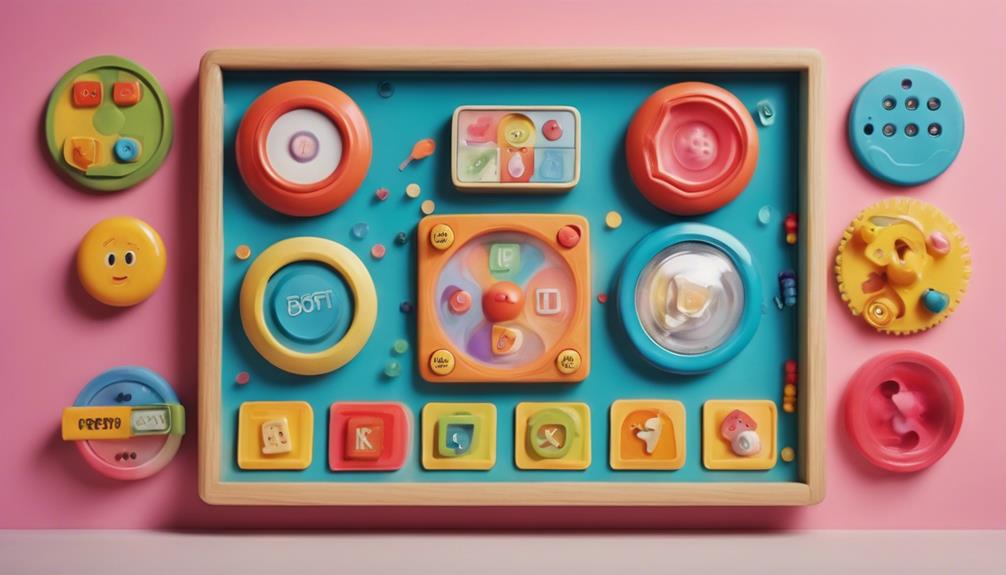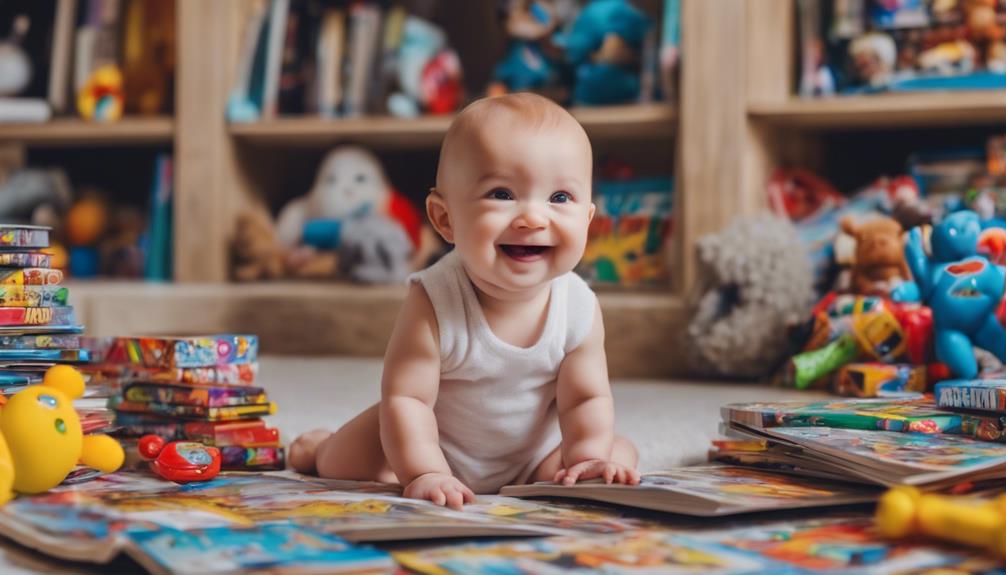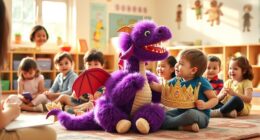Uncover the world of **sensory exploration activities**, **cognitive development games**, **motor skills building games**, **social interaction games**, and **language development activities** crafted to boost your child’s advancement. These interactive and educational brain activities stir cognitive, motor, social, and language abilities, backing holistic progression. Games like sensory play, problem-solving activities, physical challenges, and social bonding foster critical thinking, coordination, emotional awareness, and language skills. Invite your youngster into a realm of engaging games that encourage learning in a fun and lighthearted way. Delve into these enriching activities to unlock the full potential for comprehensive growth. Dive in and reap the rewards of these stimulating activities!
Key Takeaways
- Engage in shape sorting and memory matching games for cognitive stimulation.
- Use interactive toys to enhance critical thinking skills.
- Foster brain development through problem-solving activities.
- Incorporate back-and-forth interactions for cognitive growth.
- Support memory retention with stimulating and educational games.
Sensory Exploration Activities
Engaging in sensory exploration activities with your baby can greatly enhance their cognitive development and stimulate their senses. One key aspect of sensory exploration for babies involves introducing them to various textures using fabrics and materials. This helps in developing their tactile senses and understanding of the world around them.
Additionally, mirror play can aid in sensory development by allowing babies to explore their own reflections, promoting self-recognition and visual stimulation.
Reading simple picture books to babies is another effective way to engage their senses and foster cognitive development. The colorful images and different shapes in these books can capture a baby's attention, encouraging visual exploration and recognition.
Moreover, playing games like peek-a-boo can help babies develop object permanence, an important cognitive milestone, while also enhancing their sensory exploration skills.
Incorporating activities such as stacking blocks and creating simple cause-and-effect scenarios, like hitting blocks together, can further stimulate a baby's senses and promote brain development. These activities engage multiple senses simultaneously, encouraging babies to explore, learn, and make connections between their actions and the outcomes they observe.
Cognitive Development Games

To enhance your baby's cognitive development, incorporate games that focus on problem-solving, memory, and attention skills. These activities play an essential role in stimulating your baby's brain development, helping them make connections between actions and outcomes. Games like shape sorting, object permanence challenges, and memory matching exercises are excellent ways to build language skills and boost your baby's brain.
By engaging in back-and-forth interactions during playtime, you can further support the development of cognitive skills in your little one. Providing your baby with stimulating toys and games not only enhances their cognitive abilities but also improves overall brain function. These cognitive development games are designed to encourage critical thinking, memory retention, and focus, setting a strong foundation for your baby's future learning and problem-solving abilities.
Encouraging cognitive development through play is a fun and educational way to help your baby reach important developmental milestones.
Motor Skills Building Games

Motor skills building games for babies involve interactive activities that focus on physical development such as tummy time, crawling, and walking practice. These games help babies improve balance, coordination, and muscle strength, contributing to overall motor skill development.
Engaging in physical activities like parent-child swimming and walking practice can boost babies' cognitive functions and language skills. Activities like reaching for toys, stacking blocks, and playing with shape-sorting toys aid in fine motor skill development.
Motor skills building games play an essential role in babies' early development, supporting their physical, cognitive, and emotional growth.
Social Interaction Games

Building on the foundation of physical development activities, social interaction games are key in nurturing emotional intelligence and social skills in babies.
Engaging in back-and-forth interactions not only aids in cognitive development but also strengthens the bond between you and your baby. By initiating games and responding positively to your baby's cues, you play an essential role in fostering their social intelligence.
These activities involving facial expressions and interactions support your baby's visual development and cognitive growth. Simple games like peek-a-boo and mirror play offer opportunities for social engagement and help establish emotional connections with your baby.
Remember, these interactions aren't just fun and games; they're vital for your baby's brain development, laying the groundwork for healthy social relationships and emotional well-being.
Language Development Activities

During your daily interactions with your baby, engaging in language development activities can greatly enhance their cognitive and linguistic skills. Reading books with rhyming words is a fantastic way to boost your baby's language development.
Rhymes help babies develop phonological awareness, which is essential for language acquisition. The rhythmic patterns in rhyming words expose babies to a variety of sounds and words, enriching their vocabulary and understanding of language.
When you speak in rhymes during reading sessions, you not only make the activity more engaging but also stimulate your baby's cognitive abilities. By incorporating rhyming activities into your daily routine, you're supporting your baby's early literacy skills and fostering a love for language.
These activities help babies grasp the rhythm and patterns of language, setting a strong foundation for their linguistic development. So, grab some books with rhyming words and start exploring the world of language with your little one today!
Frequently Asked Questions
What Kinds of Activities Help to Develop a Baby's Brain?
To develop a baby's brain, engage in back-and-forth interactions, play games like 'Where's the cup?', encourage tummy time and crawling, read books with rhyming words, and have face-to-face interactions. These activities support cognitive, physical, and sensory growth.
What Are Memory Activities for Babies?
When it comes to memory activities for babies, engaging in playful games like peek-a-boo or hiding toys can help them grasp the concept of object permanence and enhance their cognitive skills at a young age.
How to Encourage Intelligence in Babies?
To encourage intelligence in babies, engage in quality interactions, such as back-and-forth exchanges and responding to babbling. Play games like hiding objects for development. Encourage physical activities like tummy time and crawling. Reading books aids in language skills.
How Can I Stimulate My Baby's Cognitive Development?
To stimulate your baby's cognitive development, engage in interactive play, hide objects for memory skills, promote physical activities for brain growth, read rhyming books for language skills, and use shape-sorting toys for mathematical abilities.
Conclusion
Delightful and dynamic, engage in baby brain games for a boost in development and bonding.
Immerse yourself in sensory exploration, cognitive challenges, motor skill mastery, social interactions, and language learning.
Watch as your little one's mind grows and thrives through these fun and educational activities.
So, spark their curiosity, stimulate their senses, and set them up for success with these stimulating games and activities.
Keep playing, keep learning, and keep growing together.










